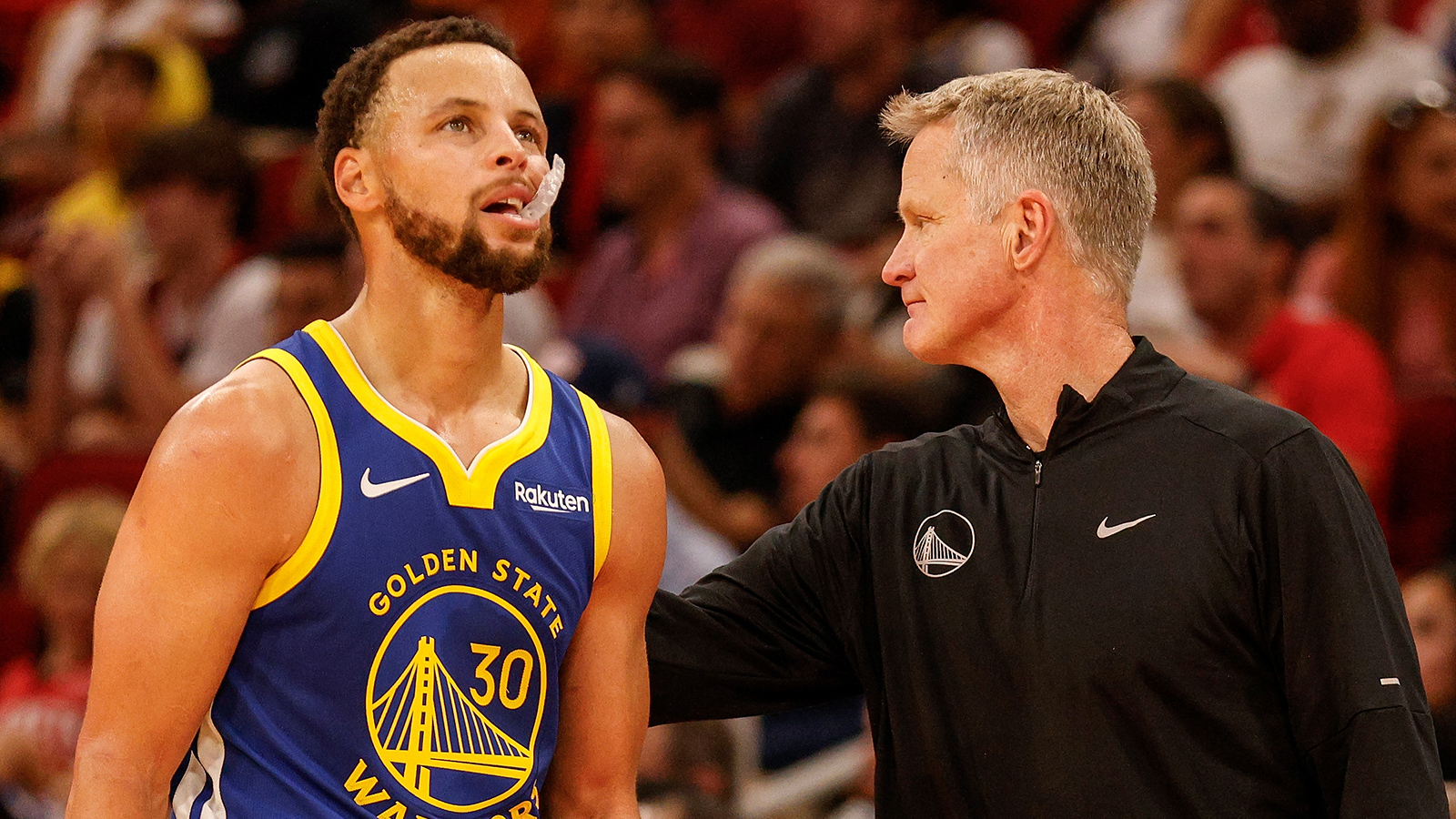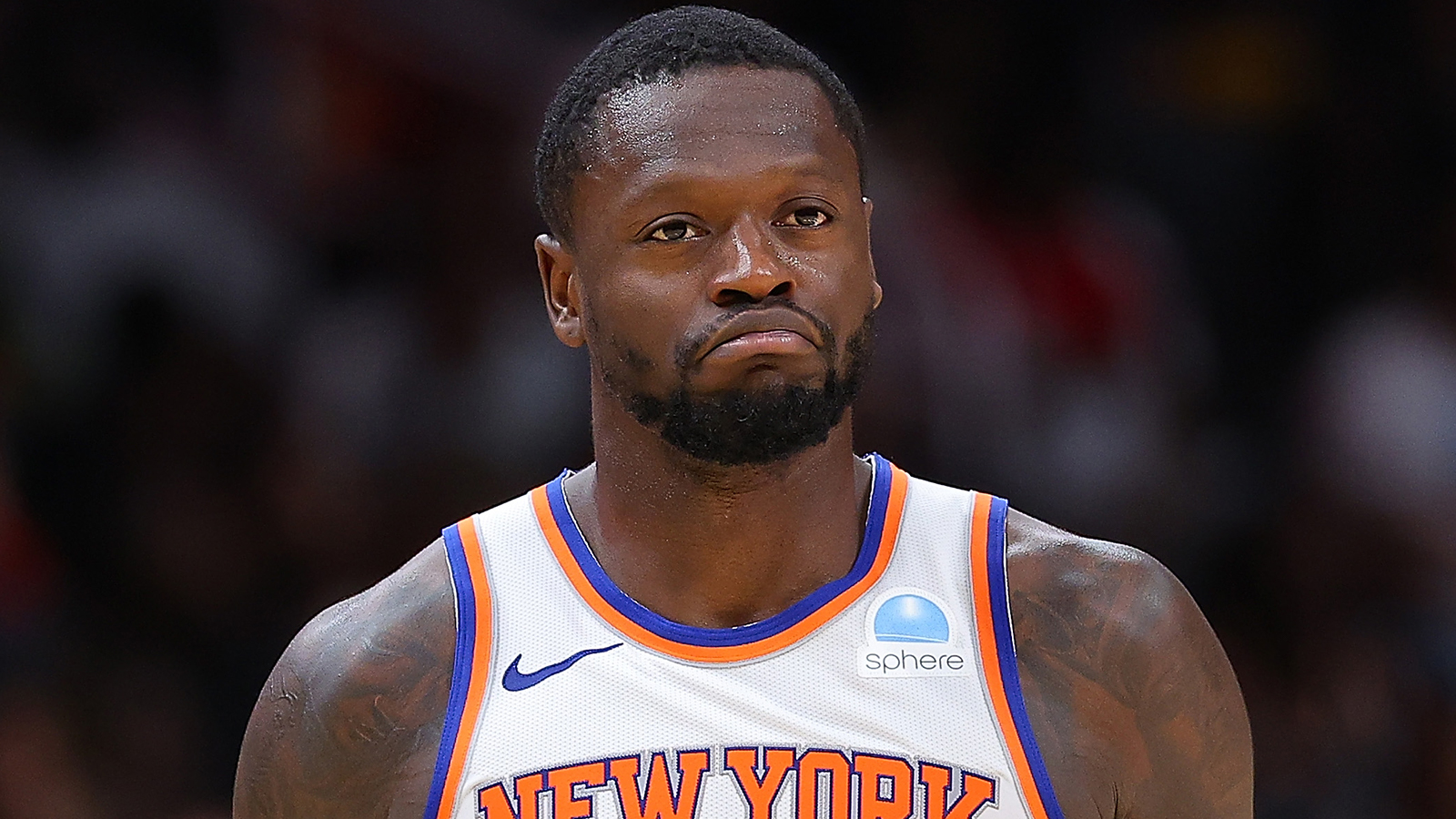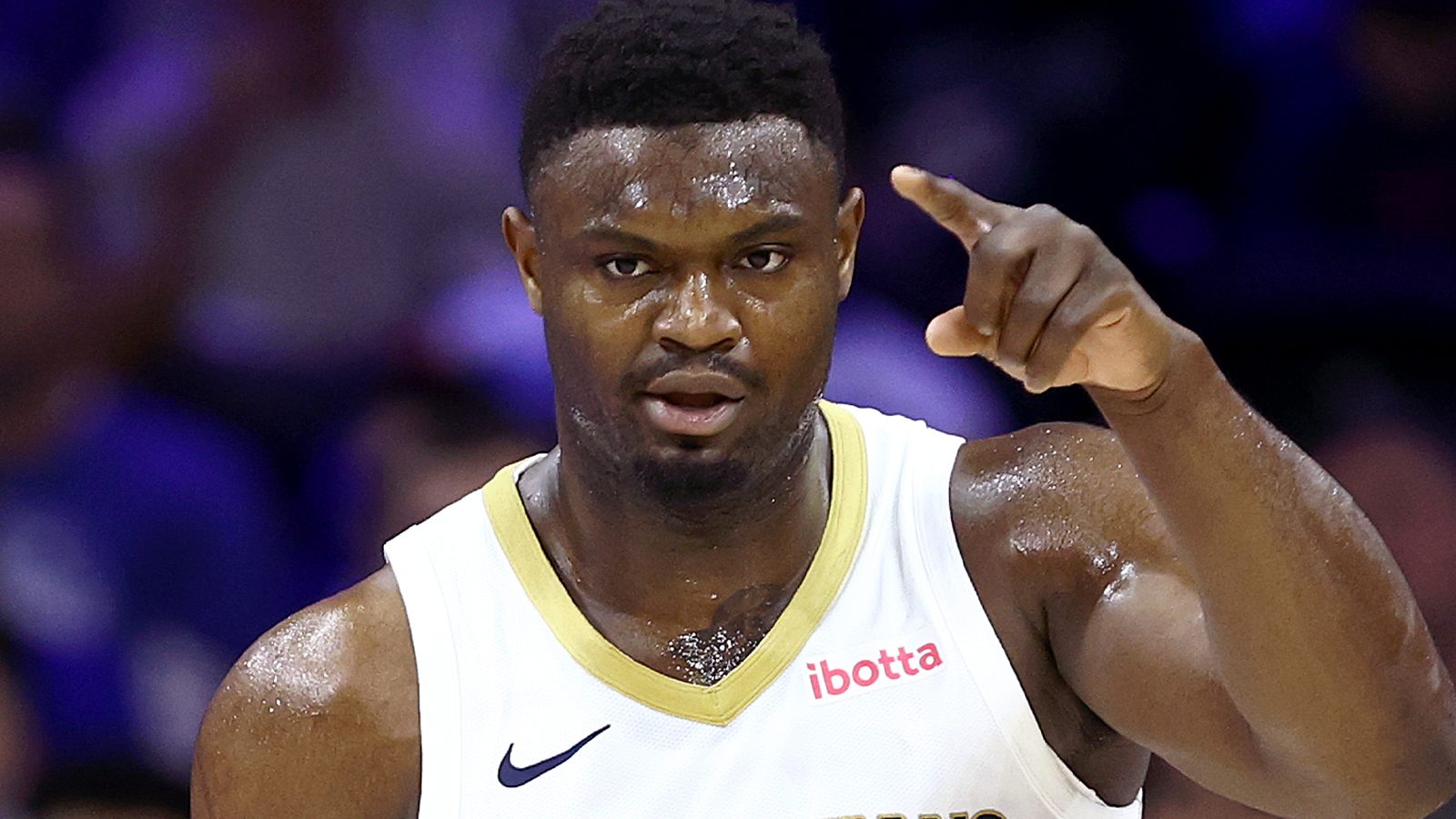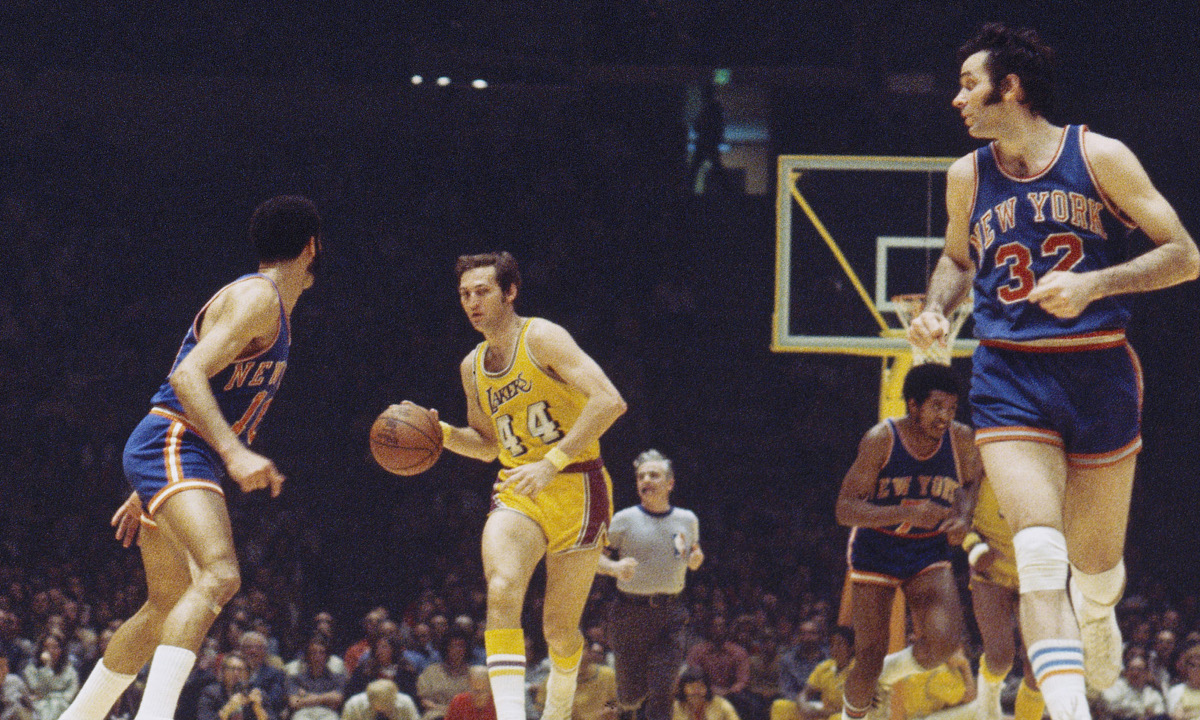
When Did the Los Angeles Lakers Switch to Purple-and-Gold?
After his first workout with the Los Angeles Lakers, future Hall of Famer Carmelo Anthony sounded awestruck by the iconic purple-and-gold colors. The Laker franchise dates to the same year as the Basketball Association of America (and thus the NBA), but purple-and-gold has not always been the team’s color scheme. They aren’t the only colors the team has worn since moving to LA in 1960. So where did they come from, and how long have the Lakers sported purple-and-gold?
The story of the Lakers’ iconic colors is a made-in-Hollywood piece. It involves plot twists and identity crises suitable for a mystery story. But for a franchise born in the Motor City, reborn in the Land of 10,000 Lakes, and moved lock, stock, and nickname to southern California, it couldn’t be any other way.
The LA Lakers began as what again?
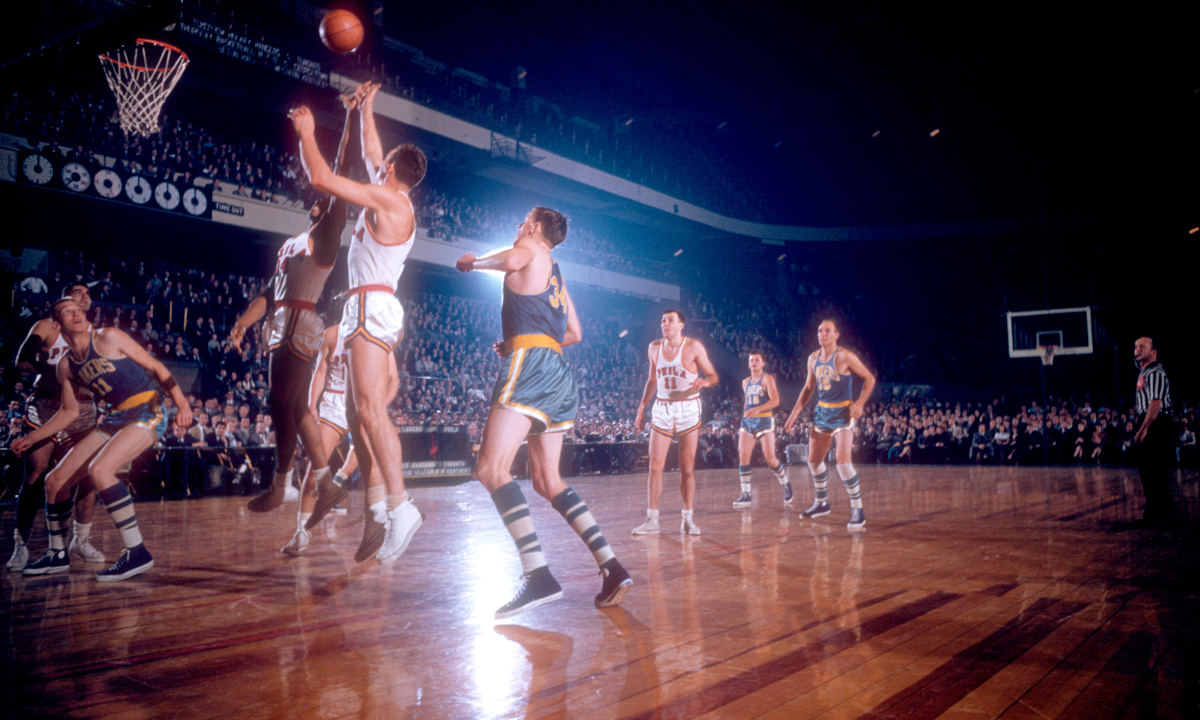
Indeed, the LA Lakers haven’t always been in LA. It’s less well-known they also haven’t always been the Lakers. The franchise traces its roots to 1946 and a new franchise in the National Basketball League. The Detroit Gems were one of four new outfits in the league and the worst, finishing 4–40.
According to a UPI report (via Newspapers.com), a Minneapolis businessman named Benny Berger bought the Gems in June 1947. He moved the club to Minnesota and renamed them the Lakers. It made sense — Minnesota, Lakes, Minneapolis Lakers. Boom.
The Lakers went with a powder blue-and-gold (some call it yellow) color scheme. With entirely new personnel, the relocated club won the NBL title in 1948 before jumping to the BAA. A championship in 1949 and another in 1950 after the NBL and BAA merged to form the NBA gave the Lakers three titles in three years in three different leagues. Take that, Boston Celtics dynasty!
Upon moving to LA in 1960, the gold disappeared. Instead, the Lakers went with royal blue-and-white, with powder blue accents. Through their first seven seasons playing at the Los Angeles Memorial Sports Arena, that was the color scheme. In their last year in the already venerable facility, a change of clothes arrived.
Purple arrives and gold returns in 1967
The LA Lakers underwent an ownership change just before the 1965–66 season. Bob Short, who moved the team from Minneapolis, got $5 million for the franchise from Jack Kent Cooke. The following year, Cooke submitted a bid for a new National Hockey League franchise for LA.
Then he hatched a plan, per the Los Angeles Times. The arrival of the NHL’s LA Kings coincided with the opening of The Forum in Inglewood, which would be the new home of the Lakers and Kings.
Cooke opted to dress both of his Forum occupants in “royal purple and gold.” However, he was not a fan of the word “purple.” Instead, a new color is born, Forum blue.
After Cooke sold the Lakers to Dr. Jerry Buss in 1979, the color became known in the team’s media guide as “royal purple.” To be clear, the hue itself was unchanged. In 2001, the tone abdicated its throne and became known subsequently as simply “purple.”
For more than a half-century, the colors of the Lakers are essentially unchanged
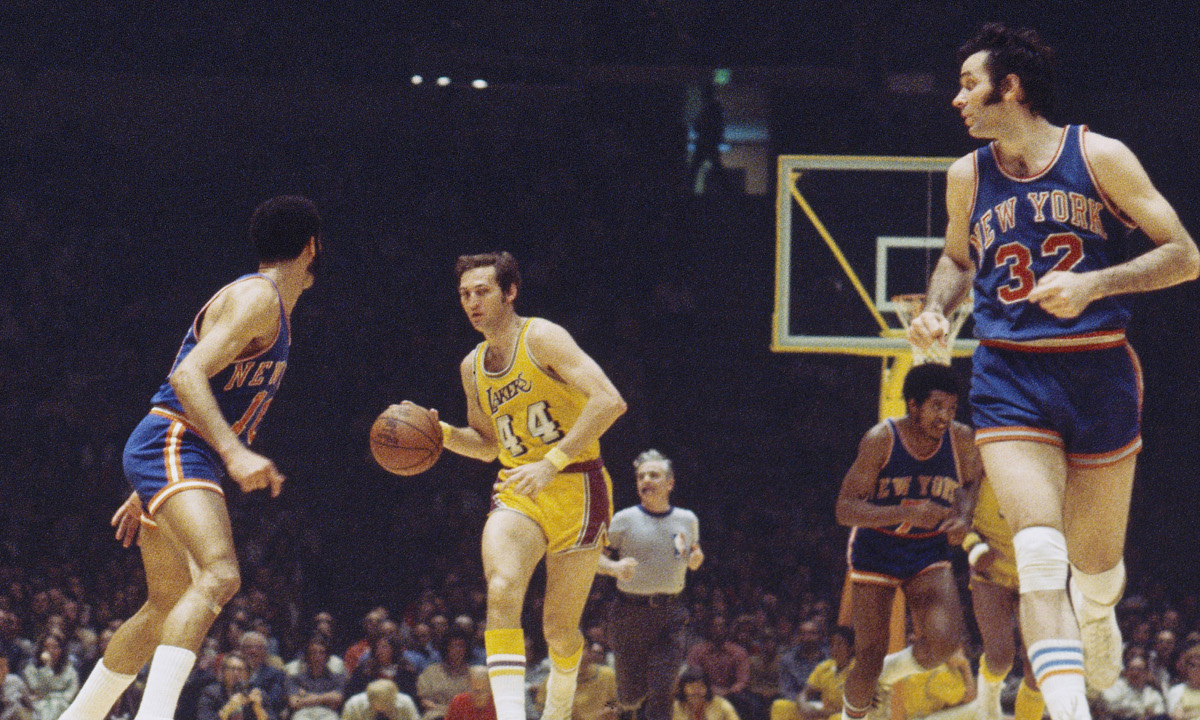
There have been stylistic changes along the way for the LA Lakers and their uniforms since the dramatic switch from royal blue to whatever-they-happened-to-be-calling-purple-that-day. The numbers on the gold jerseys switched from white to purple and then back to white before again becoming purple. In 2002, the club added white uniforms worn only in Sunday home games, the first white jerseys donned by the Lakers since 1966–67.
The drop-shaded numbers came in 1960 with the move to LA. They disappeared in 1999 at the same time the scoop-neck became a V-neck. The shading returned in 2018. Last season, while marking the 60th anniversary of the move to LA, the Lakers wore replicas of the royal-blue jerseys as alternates. A white jersey incorporating the “Lakers” block lettering with the two shades of blue from the early days in LA came with the royal-blue throwback.
The Lakers, whether in Minneapolis or LA, are one of the NBA’s most successful franchises. Their 17 titles match the Celtics for the most all-time. They are also the only club in NBA history to win three consecutive titles three times (a three-peat of three-peats).
The purple-and-gold scheme isn’t as old as the Lakers. But it’s been around long enough to become the standard for the franchise. And to their credit, the Lakers never committed a sartorial atrocity like this one.
Historical data courtesy of Basketball Reference and Chris Creamer’s SportsLogos.net.
